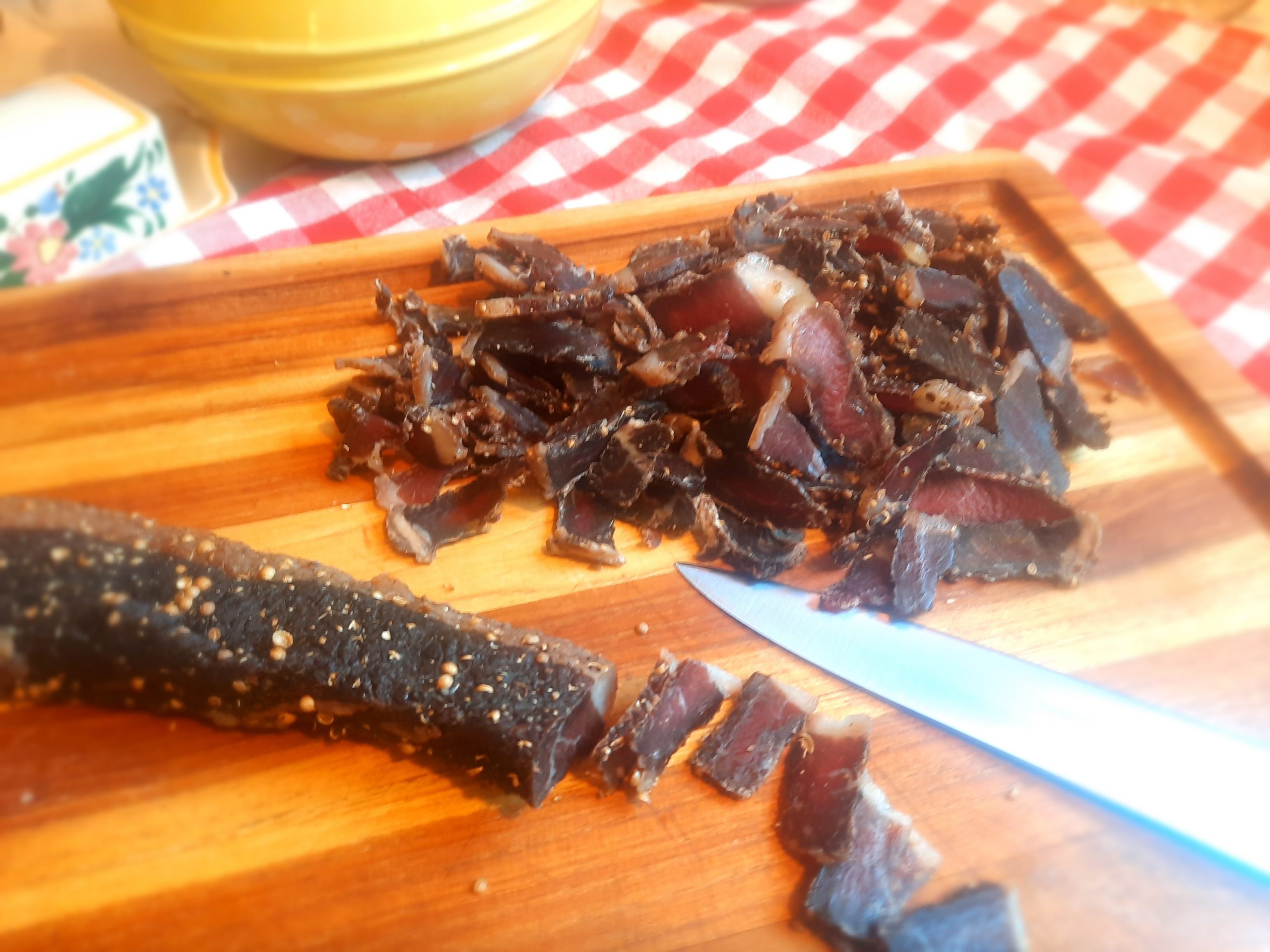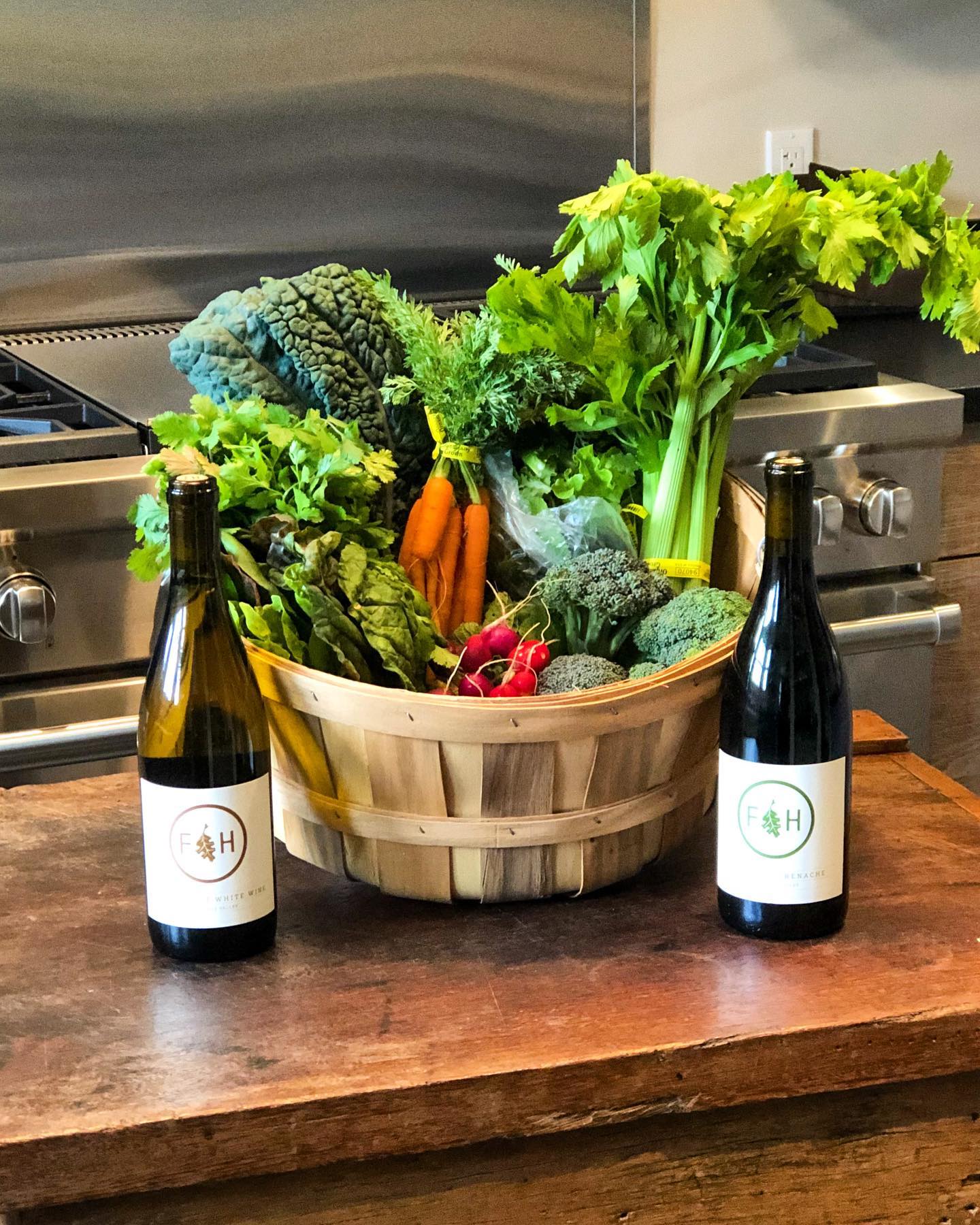By Vida Gustafson
Contributing Writer
Biltong is a traditional cured and dried meat originating from South Africa. Nearly every corner shop in South Africa has its own butcher counter and its own unique recipe for biltong. While buying other staples you’d be able to order a pound or two, choosing from dry or wet, sliced thick or paper thin. Everyone had their own favorite. I remember a piece of advice I got from a hiker as a child. He said if I ever got lost in the bush and couldn’t find water, to put out some biltong for the baboons and watch from a distance. They would eat it, get thirsty and lead you straight to some drinking water. Of course, this plan rests on having some dried meat on hand!
This method of curing and air-drying meat is an excellent way of preserving large amounts of red meat after a hunt, or a good score at the grocery store. It works really well on even the toughest cuts and is mouthwateringly delicious. This is a basic recipe that you can make saltier or spicier as you’d like. Please do not omit any salt or vinegar however, these are essential to the curing process and keep the meat free from harmful bacteria.
Ingredients
- 2 lbs raw beef or venison
- 1 C brown sugar (packed)
- ¼ + 1 tbsp kosher salt
- ½ C coriander seeds
- 1 tbsp ground black pepper
- 1 C vinegar (I use apple cider vinegar)
Method
Slice your meat into strips that are 1-1 ½ inch thick and 3-5 inches long. How you slice the meat depends on what shape your original cut is and matters only because larger pieces will take longer to dry. Do not trim too much fat off, it can be slices off after the curing process if you must, but most people enjoy the cured fat almost as much as the meat itself.
In a small food processor or mortar and pestle, crush the whole coriander until most of them are broken in half and some of them are powdered. Combine the salt, sugar, pepper and coriander seed.
Dip the sliced meat in the vinegar and set aside. Cover all the slices with the dry seasoning mix very thoroughly and place in a covered non-reactive container (preferably glass) for 24-36 hours.
Prepare a place to hang the meat, preferably somewhere with moderate airflow, not outdoors. I have two lines attached to hooks right by my kitchen window. You will also need 3-inch-long pieces of pliable wire (I use straightened out paper clips), one for every piece of biltong.
Alternately you could lay your prepared meat in a food dehydrator. The drying time will be shorter.
Drain the liquid from the meat in a colander over the sink. Insert an S shaped piece of wire into one side of the meat and hang the pieces about half a foot from each other, allowing for air to flow.
The meat will be dried in 3-4 days, depending on the humidity in the air. The meat will be dry to the touch and the color will darken. The inside should still maintain a pinkish red color, due to the curing process. Slice very thin to order and store in a brown paper bag.








